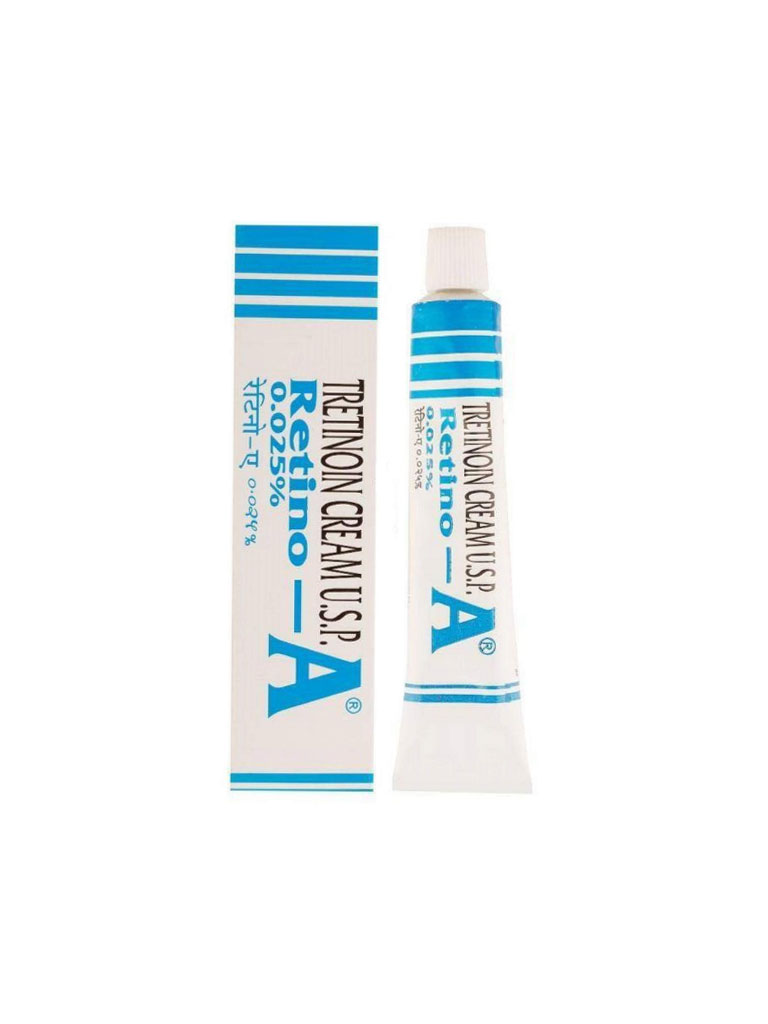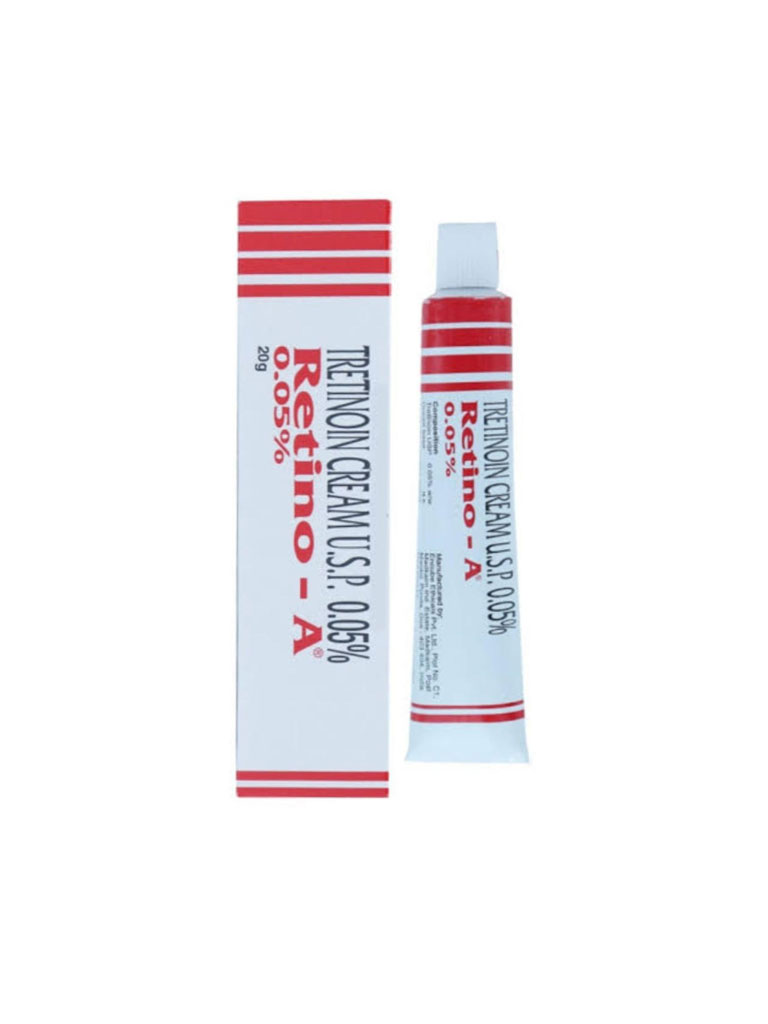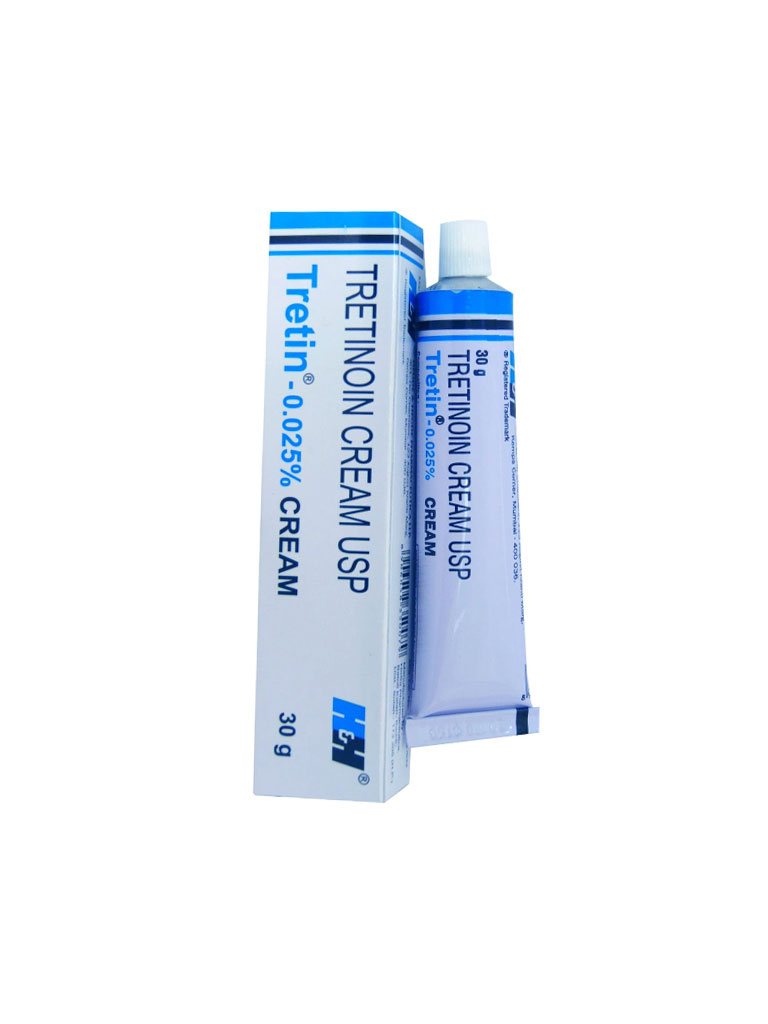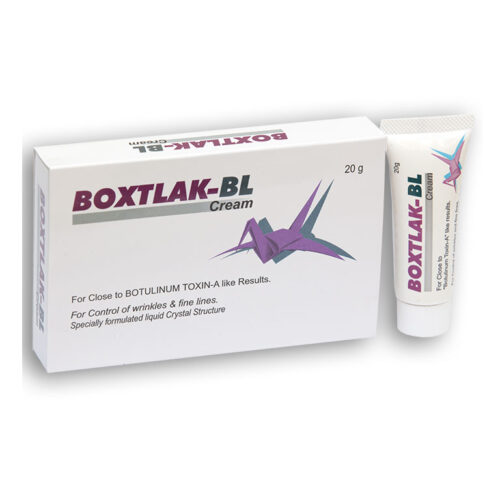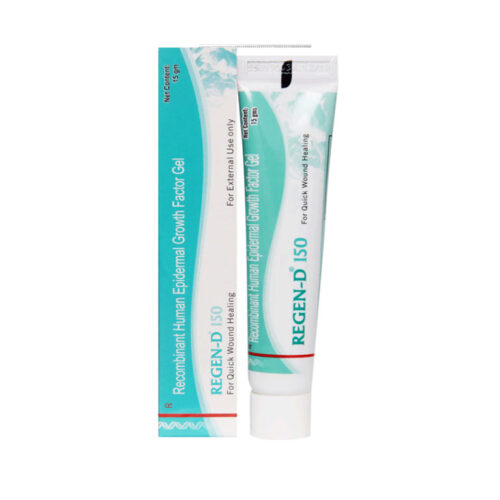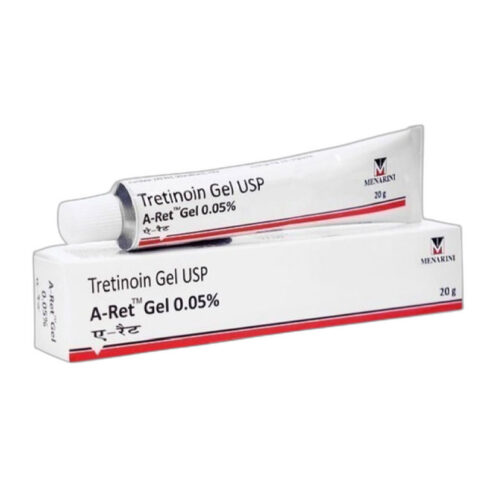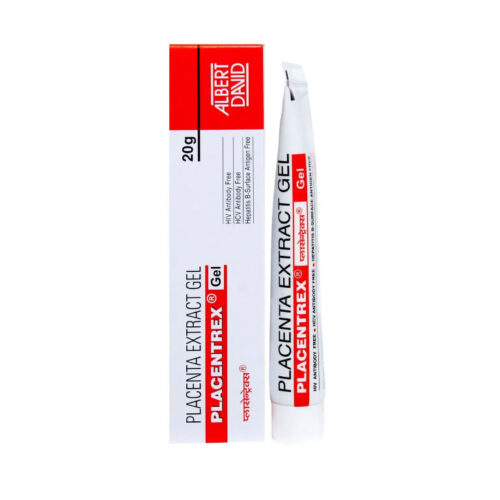Description
What is Tretinoin?
Tretinoin is a topical medication belonging to a class of drugs known as retinoids. It is derived from Vitamin A and is used primarily to treat acne and other skin conditions. This medication works by affecting the growth of skin cells. It’s also used to mitigate the appearance of fine wrinkles and mottled skin discoloration and to make rough facial skin feel smoother. In the UK and many other countries, tretinoin is available in various strengths as a cream or gel (like Tretinoin 0.025% and 0.05%), and it’s typically applied at night.
How Does Tretinoin Work for the Skin?
Tretinoin, a prescription retinoid, is a commonly used treatment for various skin conditions. It works by speeding up the skin cell turnover process, which helps to unclog pores and prevent acne formation. Tretinoin also stimulates collagen production, reducing the appearance of wrinkles and improving skin texture. When applied to the skin, it binds to specific receptors, initiating a series of cellular events that result in the normalization of skin cell growth and maturation.
Additionally, tretinoin can lighten dark spots and hyperpigmentation by inhibiting the production of melanin. However, it is important to note that tretinoin can cause skin irritation, dryness, and increased sensitivity to sunlight. To minimize these side effects, it is best to start with a lower concentration and gradually increase it over time, while also using sunscreen regularly.
How is Tretinoin Different from Retinol?
Tretinoin, also referred to in the skincare world as a retina face cream, contrasts significantly from Retinol. As a skin cream tretinoin is utilized more often to counter persistent issues like acne. This topical tretinoin cream, unlike over-the-counter creams, needs a prescription to order due to its potency and potential side effects. Its use, however, has been proven effective in treating a variety of skin conditions. Without a prescription, you may order it online at the Tropic Pharma Skincare store.
It’s essential to report side effects to FDA, as tretinoin should be used responsibly. The tretinoin cream uses range from addressing acne to rejuvenating aged skin, thanks to its rich retinoid content. Bear in mind that topical and oral tretinoin vary in application and effects. In essence, tretinoin stands apart from Retinol as it offers more profound and targeted results, albeit with potential side effects.
Benefits of Using Tretinoin: Beyond Acne Treatment
Retin-A, or Tretinoin, a renowned retinoid and active ingredient in topical acne creams, demonstrates a myriad of benefits extending beyond just acne treatment. A key player in dermatological solutions, Retin-A cream holds value for its remarkable efficacy against age spots, fine lines, and wrinkles. Users of Retin-A 0.05 topical cream have observed noticeable changes after consistent use, supporting the cream’s role in improving overall skin texture and tone.
This Retin-A cream, available to buy online, is a potent emollient that encourages skin regeneration. In terms of price, Retin-A cream is a cost-effective solution compared to other retinol creams on the market. The cream’s strength lies in its tretinoin component, offering superior results. Users can anticipate visible improvements, given the cream’s concentration of retinoic acid 0.05 percent. While Retin-A cream and retinol may seem identical, they offer distinct benefits, with Retin-A cream having an edge due to its potent formulation.
Reviewing the Strengths: 0.025% vs. 0.05% vs. 0.1%
When it comes to reviewing strengths, it is important to consider the different concentrations available. In the case of 0.025%, 0.05%, and 0.1% strengths, each has its own advantages and disadvantages.
Starting with the 0.025% concentration, this is considered to be a low-strength option. It is often used for individuals who have sensitive skin or those who are new to using the product. The advantage of a lower concentration is that it is less likely to cause irritation or other adverse reactions. However, the downside is that it may take longer to see results compared to higher concentrations.
Moving on to the 0.05% concentration, this is considered to be a medium-strength option. It provides a balance between effectiveness and tolerability. It is commonly recommended for individuals who have normal skin and have used the product before. This concentration is more likely to deliver results in a shorter period of time compared to the 0.025% strength.
Finally, the 0.1% concentration is the highest strength available. It is typically recommended for individuals who have thicker or more resilient skin, as it can be more potent and may cause more irritation. While this concentration can deliver faster results, it also poses a higher risk of adverse reactions. Therefore, it is important to carefully consider the individual’s skin type and history before choosing the most appropriate concentration.
How to Apply Tretinoin the Right Way:
Preparation and Application:
- Cleanse: Begin with a gentle cleanser to ensure your face is free from impurities.
- Wait: Post-cleansing, wait for about 20-30 minutes to guarantee your skin is completely dry. Tretinoin on damp skin may lead to irritation.
- Pea-sized Amount: Administer a small, pea-sized dollop of the tretinoin cream 0.1%. Spread this evenly across the face, avoiding the sensitive eye and mouth areas.
- Consistency: Tretinoin cream benefits are most pronounced when used consistently. However, always adhere to the prescribed frequency.
Key Considerations:
- Sun Sensitivity: Tretinoin may augment sun sensitivity. Incorporate a
broad-spectrum sunscreen into your morning routine to safeguard your skin. - Side Effects: Reactions to tretinoin include mild redness or peeling. If adverse effects escalate, consult your dermatologist promptly.
- Products Interaction: Before layering other skincare products or makeup, wait for the tretinoin cream to fully absorb. This typically takes around 20 minutes.
Tretinoin Products to Consider: From Retin-A to Vitacid
One of the most recognized brand names in the skincare world, Retin-A® is synonymous with effective anti-aging and acne treatments. Retin-A is actually the brand name for the generic drug known as tretinoin, a derivative of vitamin A. Tretinoin works by stimulating the turnover of skin cells, helping to reduce fine lines, sun damage, and acne.
Apart from Retin-A, tretinoin is also marketed under a variety of other brand names. Some of these include Vitacid, Renova, Avita, Refissa, Atralin, Tretin-X, Rejuva-A, Stieva-A, Tretinoïne, Retacnyl, and more. It’s crucial to note that while the branding might differ, the active ingredient – tretinoin – remains consistent across these products.
To clarify, brand names and generic drugs often lead to confusion. In essence, a brand name like Retin-A is the commercial name given by a company, whereas tretinoin is the generic name of the drug itself.
Both the brand-name product and its generic version contain the same active ingredient and offer the same therapeutic benefits. The primary difference usually lies in the price point, with generics typically being more affordable than their brand-name counterparts. When choosing between them, it’s essential to remember that both offer similar effectiveness in treatment.
Where Can I Buy Retin-A Cream?
Available in varying strengths like tretinoin 0.1% and tretinoin 0.025%, functions as a potent remedy for wrinkles, age spots, and acne, harnessing retinoic acid’s transformative powers. Studies show that the correct dose, combined with consistent use, can lead to remarkable skin improvements. But, where does one find this elixir?
Tropic Pharma, a reputable e-commerce platform, specializes in health and beauty products, boasting an impressive collection of tretinoin creams and gels. If “Where can I buy retin a cream?” is your pressing query, you’ll find your answer with Tropic Pharma’s vast array, including the highly sought-after Tretiheal and formulations with tretinoin cream USP specifications. From Retin-a 0.1 to Retin-a 0.05, and even the milder Retin-a 0.025, there’s a tailored solution for every skin type.
It’s essential, however, to tread with caution. Tretinoin is a synthetic derivative and, as with all potent actives, may come with possible side effects. Hence, consulting with a dermatologist, understanding the ideal dose, and adhering to the prescribed regimen is imperative. Furthermore, wear protective clothing when exposed to the sun, as tretinoin increases skin sensitivity. In the quest for radiant skin, remember: the right product, combined with knowledge, yields the best results.
Possible Side Effects of Tretinoin
Tretinoin, a potent derivative of vitamin A, is often prescribed to treat various skin conditions, primarily acne. Despite its effectiveness, tretinoin may cause some serious side effects, which users should be aware of:
- Users might experience skin irritation, where the area to which tretinoin is applied may become red and uncomfortable.
- More serious side effects include stretch marks and peeling skin.
- Users may report side effects like a burning sensation or discoloration to the FDA.
Therefore, consult your doctor before using tretinoin, especially at the highest dose, to ensure its suitability for your skin. Side effects not listed here may occur too. Stop using tretinoin and seek immediate medical attention if these symptoms persist.


